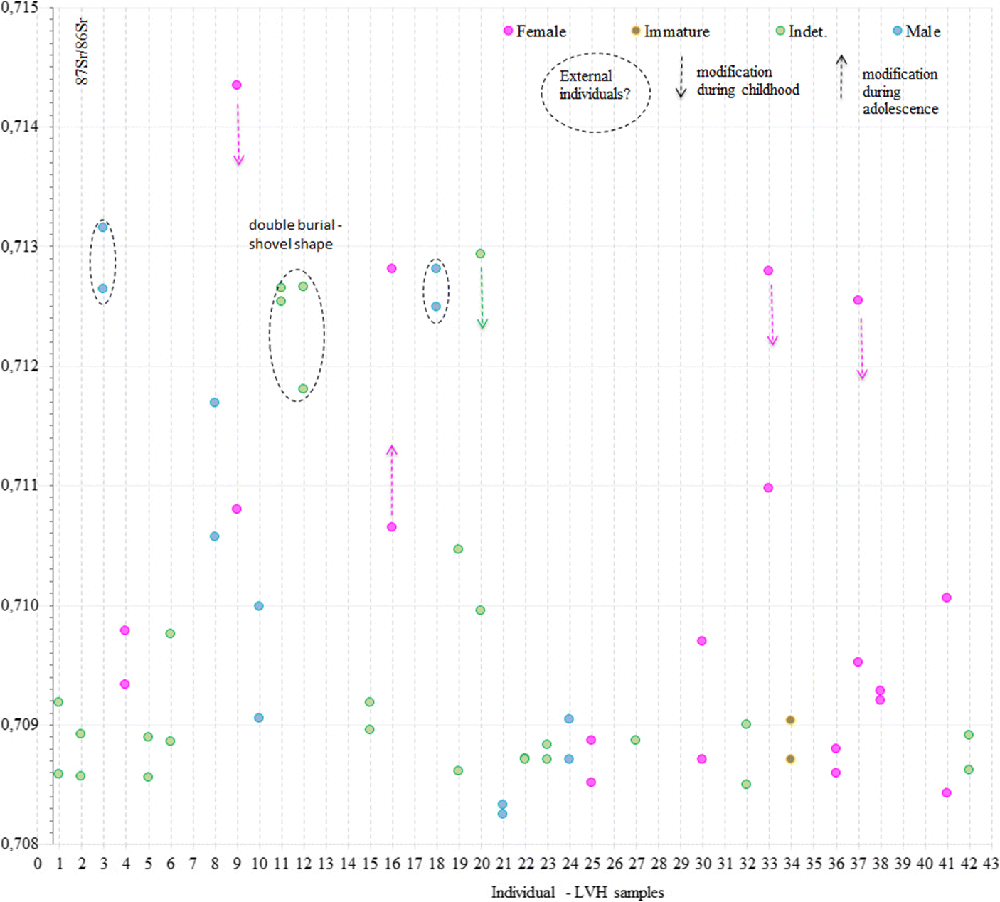Open access A Multidisciplinary Approach to Neolithic Life Reconstruction, by Goude et al. J Archaeol Method Th (2018).
Abstract (emphasis mine):
The expansion of Neolithic stable isotope studies in France now allows distinct regional population-scale food patterns to be linked to both local environment influences and specific economic choices. Carbon and nitrogen isotope values of more than 500 humans and of animal samples also permit hypotheses on sex-biased human provenance. To advance population scale research, we here present the first study that draws together carbon (C), nitrogen (N), sulphur (S) and strontium (Sr), dental calculus, aDNA, and palaeoparasitology analysis to infer intra-population patterns of diet and provenance in a Middle Neolithic population from Le Vigneau 2 (human = 40; fauna = 12; 4720–4350 cal. BC) from north-western France. The data of the different studies, such as palaeoparasitology to detect diet and hygiene, CNS isotopes and dental calculus analysis to examine dietary staples, Sr and S isotopes to discriminate non-locals, and aDNA to detect maternal (mtDNA) versus paternal lineages (Y chromosome), were compared to anthropological information of sex and age. Collagen isotope data suggest a similar diet for all individuals except for one child. The provenance isotopic studies suggest no clear differences between sexes, suggesting both males and females used the territory in a similar pattern and had access to foods from the same environments.

Relevant excerpt:
With regard to aDNA analysis and the information this reveals on genetic provenance, Table 1 presents the mitochondrial haplogroups (SNPs typing) retrieved from the human remains. SNPs typing made it possible to assign one individual (LVH3, male < 60 years old) to maternal lineage K (or derivatives), and another individual (LVH12) to lineage H (or derivatives), whereas the low number of SNPs recovered for the last sample (LVH26) did not make it possible to assign any haplogroup. No Y chromosome SNP, as well as no reproducible result for HVR-I sequences, could be obtained for any Le Vigneau 2 individual. Unfortunately, major DNA degradation prevents precise identification of the maternal and paternal lineages, and these two mitochondrial haplogroups do not allow any assessment about female mobility. However, we can note that maternal lineages characterized in the Le Vigneau 2 site are quite common in Neolithic farmer groups and fit within the French Middle Neolithic variability (from 14 to 25.5% for haplogroup K and from 7.9 to 40.9% for haplogroup H; Beau et al. 2017), including farmers from the Paris Basin (35% of H and 18.33% of K for the Gurgy site; Rivollat et al. 2015).